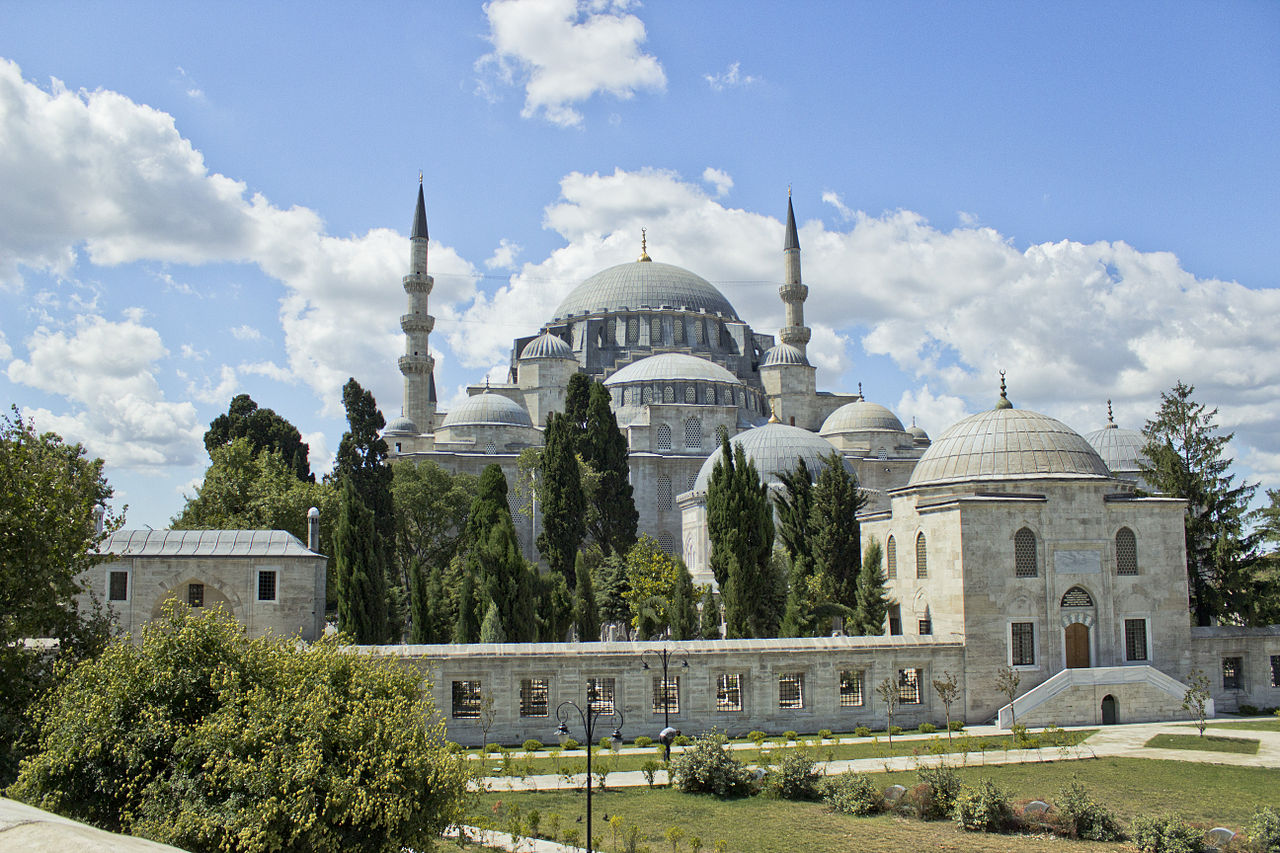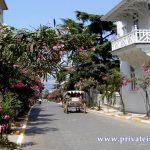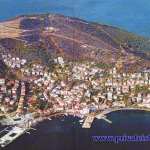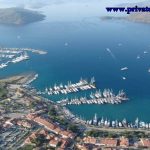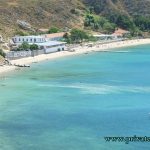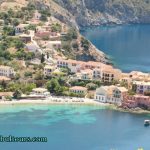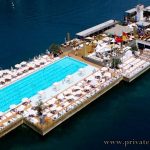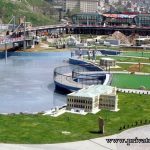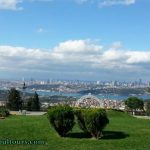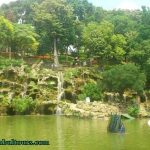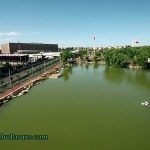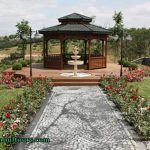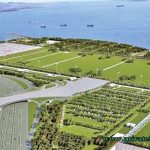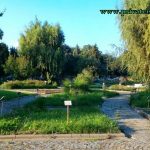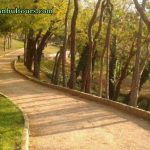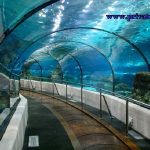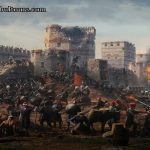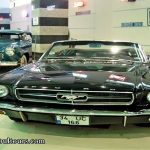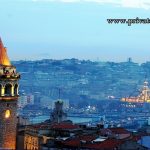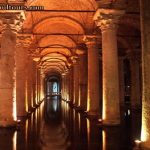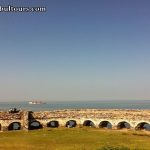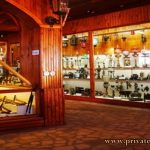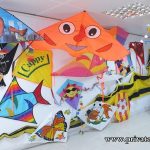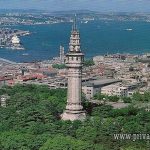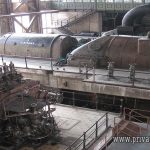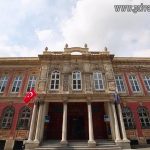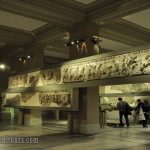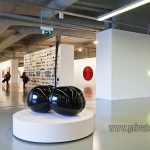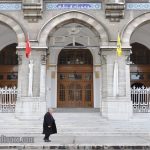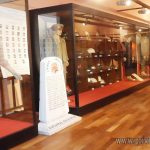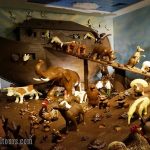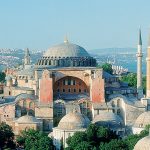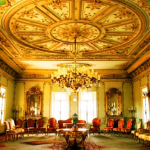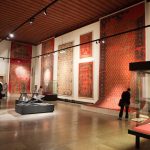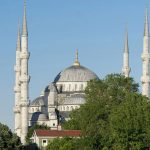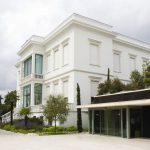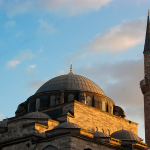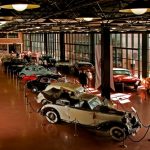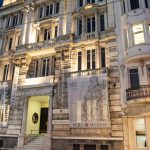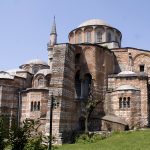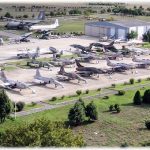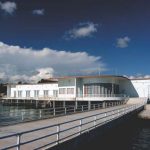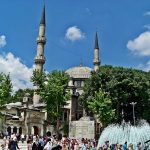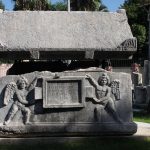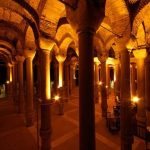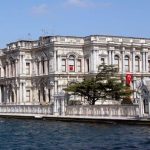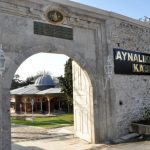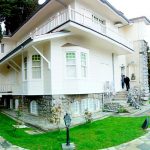Suleymaniye Mosque, the name of Süleyman I, was built between 1551 and 1558 by Mimar Sinan in Istanbul.
The Suleymaniye Mosque, which is considered as the monumental work of the architect Sinan, was built as a part of the Süleymaniye Complex, consisting of a madrasa, a library, a hospital, a bath, imaret, hazire and shops.
Süleymaniye Mosque is one of the most important examples of the Classical Ottoman Architecture. Despite the earthquake of over one hundred faces in Istanbul, there is not a slight crack in the walls of the glass. Dome of the glass sitting on four elephant feet 53 m. It is 27.5 m in diameter. This main dome is supported by two half domes, as seen in Hagia Sophia. There are 32 windows in the dome. There are minarets on the four corners of the mosque courtyard. Two of these minarets adjoin the gallery are three of the honorable and 76 m. The other two minarets on the corner of the entry wall of the entrance gate on the northern edge of the mosque hunter are two honors and 56 m. In height. The mosque was built to suit the air flow that would clear the oil lamps inside. The mosque was built to create a stream of air in the mosque that allows the oil lamps to be collected in one spot. The work that comes out of the window is on the main entrance door
Süleymaniye Mosque is one of the most important examples of the Classical Ottoman Architecture. Despite the earthquake of over one hundred faces in Istanbul, there is not a slight crack in the walls of the glass. Dome of the glass sitting on four elephant feet 53 m. It is 27.5 m in diameter. This main dome is supported by two half domes, as seen in Hagia Sophia. There are 32 windows in the dome. There are minarets on the four corners of the mosque courtyard. Two of these minarets adjoin the gallery are three of the honorable and 76 m. The other two minarets on the corner of the entry wall of the entrance gate on the northern edge of the mosque hunter are two honors and 56 m. In height. The mosque was built to suit the air flow that would clear the oil lamps inside. The mosque was built to create a stream of air in the mosque that allows the oil lamps to be collected in one spot. Jobs from the hull were collected in the room above the main entrance door and used to make ink.
Main and supporting dome with elephant foot support
There is a rectangular fountain in the middle of the mosque courtyard surrounded by 28 porticoes. On the side of the chapel of the glass, there is a junior where Kanuni Sultan Süleyman and his wife Hürrem Sultan are present. In order to give the image of the sky featuring the domed stars of Süleyman’s Türbes of Kanuni, it was adorned with diamonds (diamonds) placed between the metal plates.
It has a simple structure in terms of mosque adornments. The windows on the mihrab wall are decorated with stained glass. The tile medallions on the windows on both sides of the mihrab are written in Surat Al-Fathi, and in the middle of the main dome of the mosque are written Surat an-Nur. Hasan Çelebi is the mosque line.
Suleymaniye mosque has 4 minarets. The reason for this is the fourth sultan after the conquest of Istanbul by Kanuni; It is a sign that these ten minarets are the tenth sultan of the Ottoman Empire.
The second largest complex after the conquest of Fatih in the Ottoman mausoleums is Suleymaniye Külliyes. The complex was built on the highest peak in the middle of the Istanbul peninsula, overlooking the Golden Horn, Marmara, Topkapi Palace and Bosphorus. Mimar Sinan’s tumulus is a modest small building opposite to the walls of the outer courtyard, which has a mosque, medreseler, darüşşifa, darülhadis, fountain, darülkurra, darüzzafe, imaret, hamam, tephane, library and shops. Tiryakiler Bazaar has two medrese circles and two small houses on the road behind it.
“It reminds us of the arrangement of the windows of madrasa walls and dome rows in the Architect Sultan Complex, in the monument of inner rooms determined by a window on each floor of the dome, in the monolithic medresses which constitute a ceiling of the long long plaza bearing the name of” Tiryakiler Çarşısı ”
The arch of the main house was called by the Sinan to be a cube of cbra (power belt). The platform of the mosque hunter is higher than the road on the Golden Horn.
Suleymaniye Mosque with the expression of Evliya Çelebi
According to Evliya Çelebi, the construction of the mosque was as follows: “How many thousand master master architects, architects and marble workers in the whole Ottoman country gathered all of them and gathered all of them for three years under the foundation of all the pillars connected to the foundation. output. A year later, he remained … A year later, a mihrab was placed according to the presidency of Sultan Bayazidı Veli. The walls of the four sides are raised up to the dome between them for three years. After that, the text made a strong dome on strong four podiums. The top of the blue mausoleum of this great mosque is a dome that is rounded by the Hagia Sophia dome, and the seven meliki are covered with high altitude. This unique dome has four pillars, on the left side of the other mosque, and on the right there are four marble columns on each side, each of which is worth about ten treasures of Egypt … But God knows that these four colored pillar columns are not on the four corners of the world, they are beautiful pillars at the height of each other. Color color glasses are the work of Serhoş Ibrahim. Every glass piece is nice, with hundreds of color pieces of glass, flowers and glass adorned with the beautiful names of Allah, these are praised worldly among the land and sea, and the felekte is no match for them … the master who made the marble made a muezzin on the fine column that the guile is made of paradise. … When the mihrabah, when Zakariya was on the Karahisari line on the mihrab, entered a food with him (Ali İmran: 37), the verse was written with zehebi laciverd.
And on the right and left side of the mihrab, there are twisted columns, twisted pillars, and there is a man, and there are twenty kilims of wax waxes on the candlesticks, which are polished with gold and gold on the bottom. There is a high office on the left side of the column, Hunkar Mahflili, and four in the four corners There are two sides of the mosque on the sides of the mosque … again this suffalaşa is on the columns of thin columns and the right side of the floor overlooking the mosque … when the congregation is very worshipers in these suffal … prayer candles burning all twenty thousand candles and hanging hizeler. Inside this mosque there are two fountains behind the Keble Capus. And some treasures under the Top Treasury Maksures.
Suleymaniye Mosque’s Chinese
Süleymaniye Mosque’s Hünkar mahfili and mihrabı
The Ahmed Karahisari line inside and outside this glass should be neither written nor written today. First of all, in the midst of the great mausoleum is Allah the heavens and the earth. It is a cell with a frame in it, as if it were its adjective. It is in a sieve. It is a star that glows like a pearl, and it is a blessed tree where the sun has not sunk at the place where it was sunk, it is burnt from the olive tree and burnt. Even though his flesh does not touch him with a fire, he gives light immediately to the light. Allah will give people the distinction. Allah has revealed the seven in his writing of the verse “Know all things well.” (Nur 35). In the half-dome on the Mihrab … (Enam 79). And at the corner of four heads Allah, Muhammad, Abu Bakr, Omar, Osman, Ali, Hasan, Hussein are written. And on the window to the right of the pulpit is written … (Gen 18). On the top windows are written the beautiful names of Allah.
And this mosque has 5 capes. On the right side is the imam cap, on the left side is the vernacular, under the vuze cap, and the two side gates are written on the left side door (Rad 24) and the Kebab Ahmad al-Karahisari was burnt in the book on the left side.
The mosque sheriff is said to be the mosque of the mosque, and the haremi latifin is a three stone staircase with a stone staircase and descends … and all four sides of this courtyard are windows, the blacksmith Davudi shows art and so anvil, And shiny windows like pullover. And these windows have all the windows … in the middle there is a signposted pool … the keble of the courtyard is a high artifact from all the doors, so white crude marble similar to this door on the earth is not seen with a curved, And there are four minarets of this mosque, each of them is a mujahideen muhammed authority … four ten minarets … three minarets on the left side minarets on the left side and minarets on the left side of the mosque … and two taps on each side of this mosque have ablution refreshing taps.
The main dome of the Suleymaniye Mosque.
The grace and beauty on the corner of the foundation and its façade on the corner of the foundation and the appearance of all kinds of arts fascination are inside and outside this mosque. Even when the building is completed, the Grand Architect Sinan says: ‘My Sultan built a mosque for you on the Day of Resurrection, when Hallaci Mansur dumped the Makalidi Cibal Demavend mountains on the earth like Halla’s cotton, and this mosque’s dome dominates this rank like a transparent ball in front of Mansur’s bow.
An arrow in front of the altar is seen in the place, a rosebush is in the middle, and the sultanate of the Solomon Khan is visible under a high dome.
There is also a floor courtyard on the three sides of the glass, two sides of which are sandy beaches with a wide range of species, such as big plane trees, willow willows, cypresses and linden trees and ash trees and ash trees. … Bath facing the Oriental side of the cap. Steam is obtained in the staircase on this side of the courtyard is not a wall for the city of Istanbul to pull down a low wall was pulled. The sentence community stood there and the Hünkar Palace, Üsküdar, Boğazhisar, Besiktas, Tophane and Galata, and Kasımpaşa and Okmeydanı were seen.
To the right and to the left of this mosque there are four large medreselas for four sectarian shaylulislamas and a narrow shrine and a narrow cemetery as well as a medical science school, a martyr and a cafeteria, a cafeteria and a cafeteria, a caravanserai for those who come and go, A janissary palace, a jeweler’s castle shoemakers, and a nihil cihen light bath …

